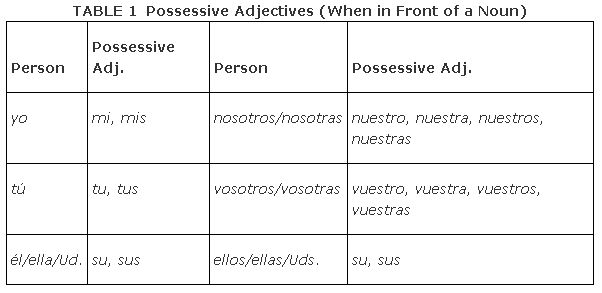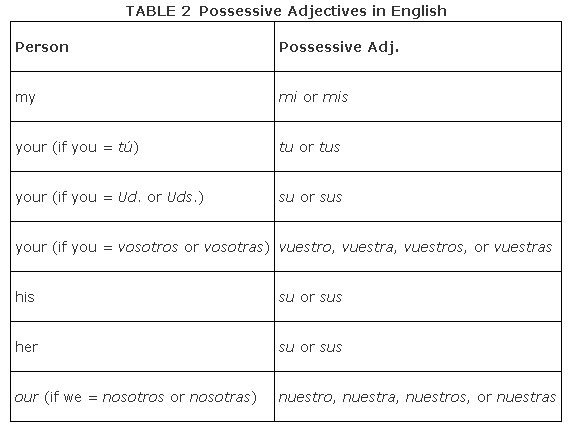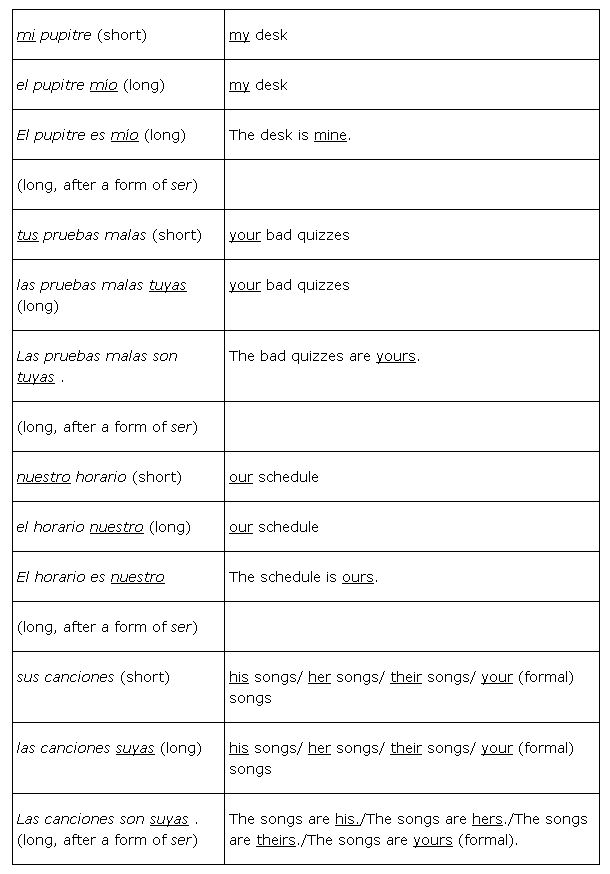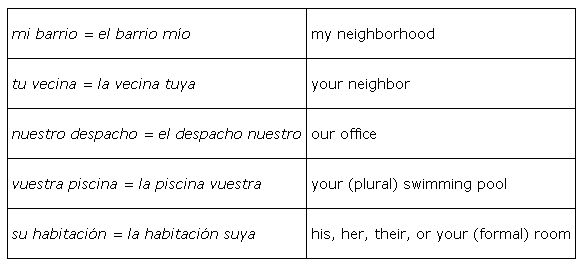Possessive adjectives indicate ownership. Although they express the owners of the nouns they modify, they must match the gender and number of the nouns they describe, not the gender and number of the owners.
There are two kinds of possessive adjectives: The shorter forms are usually placed in front of the noun, and the longer forms follow the noun. The former are listed in Table .

Remember that the possessive adjective must match the noun being owned, not the owner. Once you decide to use the adjective su, only make it plural if it is in front of a plural noun—no matter how many people own the noun. If a family owns a car, “their car” is written su coche. If a man owns many cars, “his cars” is written sus coches.
Table can help you understand the Spanish equivalents of English possessive adjectives.

The pronoun su is used to mean his, her, their, and your. The pronouns él, ella, and Ud. share the same conjugated form of the verb as well as the same possessive adjective. If you ( Ud.) own a book, “your book” is written su libro. If you ( tú) own a book, “your book” is written tu libro. Notice that the subject pronoun tú has an accent and means “you.” The possessive adjective tu has no accent and means “your.” There are four forms of nuestro and vuestro because they end in ‐ o and, thus, must change to match the number and gender of the nouns they modify.
The long form of a Spanish possessive adjective is used when it is placed after the noun. In Table , notice that all the long forms of possessive adjectives have gender endings to match the nouns they modify. Use the correct gender and number of the possessive adjective to match the noun it follows.

In English, the possessive changes when it follows a form of “to be” (such as, “is” or “are”). For example, “ my book” becomes “the book is mine.” In Spanish, the long form of a possessive adjective is used after the linking verbs ser or estar or when an article precedes the noun being modified.

Did you notice that the nosotros/nosotras and vosotros/vosotras do not have a short and/or a long form?
The following examples highlight the difference in how the two types of possessive adjectives, which are basically equivalent, are used. The longer form puts a little more emphasis on the possessor than on the object possessed.

|
|
|
|
|
|
|
|
|
|
|
|
|
|
|
|
|
|
|
|
|
|
|
|
|
|
|
|
|
|
|
|
|
|
|
|
|
|
|